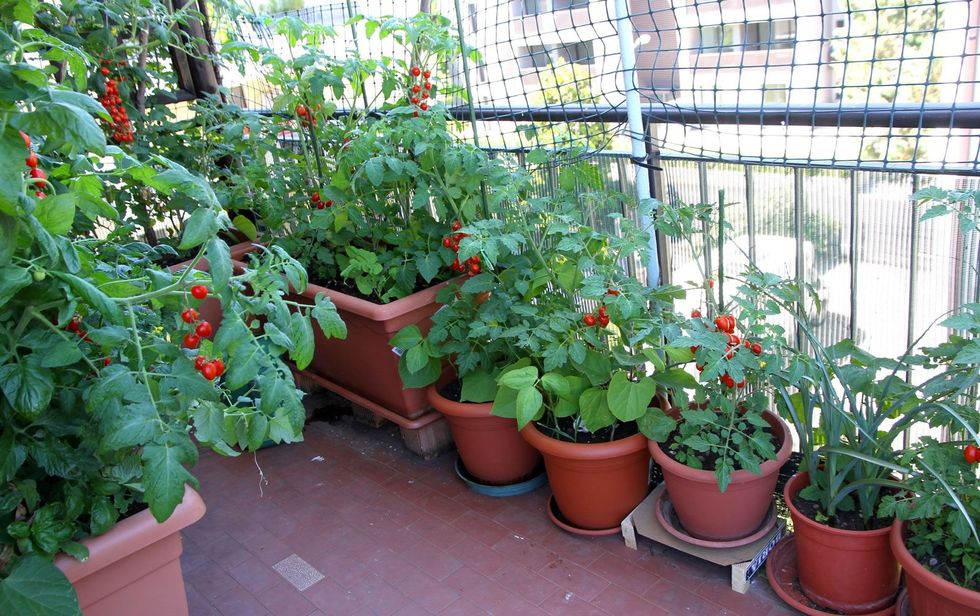How to Start an Isolation Garden
Starting a garden is one of the most rewarding things you can do, especially during a time when you have to stay home.
In this moment, we all need to rewire our relationship to each other and the Earth, and what would provide a better blueprint for how to do this than actually growing something up from seed?
Here are some quick tips for getting your own garden started. (Of course, be sure to do your own research and tailor it to the place where you live—these are just some jumping-off points).
1. Figure out where you’re going to grow your plants
If you have a large garden or plot of soil, then make sure to set aside a space of it where you’ll grow your plants. You could also consider buying or making a raised soil plot or using a trellis–or hydroponic gardens or good old potted plants are great options, as well.
Larger containers work best for growing vegetables, but for windowsill gardens, you can get away with repurposing old fruit cartons and yogurt pots. Start by filling up the pots with high-quality compost (or make your own). You could also try making some of these DIY seed-starters to give your infant shoots a head-start. Make sure that your garden is walled off to protect your plants from pests and predators.
2. Decide what you’re going to grow
Many gardeners recommend starting out with leafy greens, if you’re new to the whole gardening thing. “Carrots, garlic, tomatoes, onions, chilies, peppers, snow peas, and radishes all work as potted plants, as are strawberries and blueberries,” advises one gardening expert.
Regardless, don’t plant something you won’t eat, and start small if you’re a beginner. Make sure you tailor your planting choices to the amount of sunlight and exposure your plants will receive, as most vegetables require six hours of sunlight per day. If you’re planning on using natural soil (the kind that’s already in the ground), you’re also going to want to check your soil’s pH, because most plants require a neutral pH—between 6.2 and 6.8—and make sure it’s capable of fostering new life.
If you’ve chosen to grow your plants in pots or DIY containers, you might consider beets, broccoli, carrots, cucumbers, eggplants, onions, peas, summer squash, and tomatoes.
3. Prepare the soil and plant the garden
You’ll want to start by collecting all the necessary tools: seeds, soil, fertilizer, pots, and gardening equipment. Check out your local garden supply store and see if they’re doing curbside pickup or delivery, and read up on the tools and supplies you need before going.
Once you have everything you need, you’ll want to clear your space of weeds and prepare the soil. When you plant your seeds, be sure to give them enough room, as overcrowding can kill gardens.
If you’re using a pot, start with a large amount of healthy soil, sprinkle in the seeds (at a safe, generous distance apart) or plant your shoots, and be sure to cover it all with a rich layer of fertilizer and water.
4. Take care of the plants
Every plant and garden will require its own kind of maintenance, and it’s likely that you’ll make mistakes during your first few growing seasons. Fortunately, technology and nature aren’t always completely incompatible—and apps like Garden Tags or Gardening Answers can help you keep track of your garden, while also connecting you to a whole community of gardeners. You could also consider starting a garden journal or a calendar to track your progress.
Obviously, don’t forget to water the plants. Consider adding mulch, be sure to weed and prune your plants, and don’t be discouraged if you have to try some different tactics in order to persuade your shoots to grow.
5. Try again
Nature operates in cycles, so don’t be discouraged if your first efforts don’t work. Instead, try to enjoy every step of the planting and growing process. Now is the perfect time to adopt a mindful approach to gardening, if you’re into that sort of thing, or consider gardening in tandem with the moon’s phases. However you choose to approach gardening,



